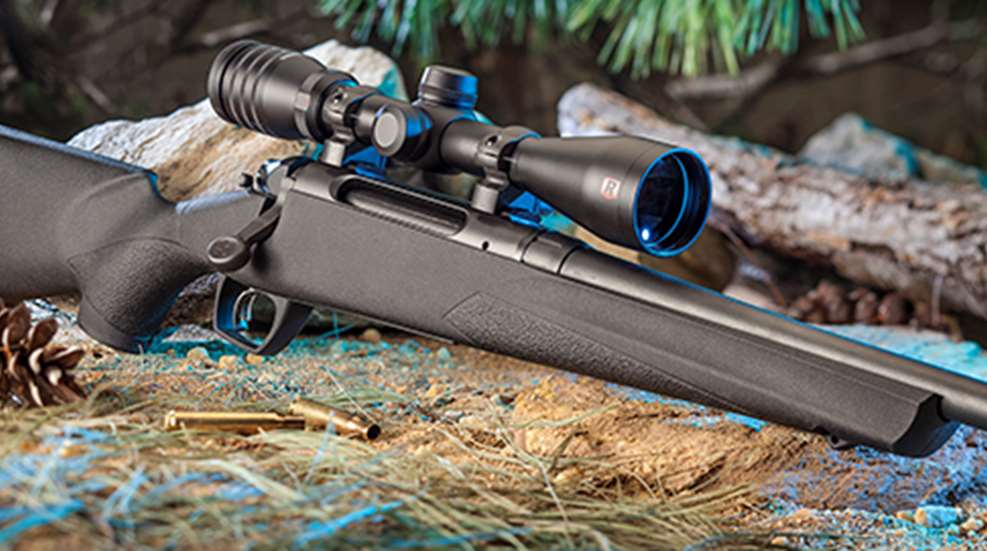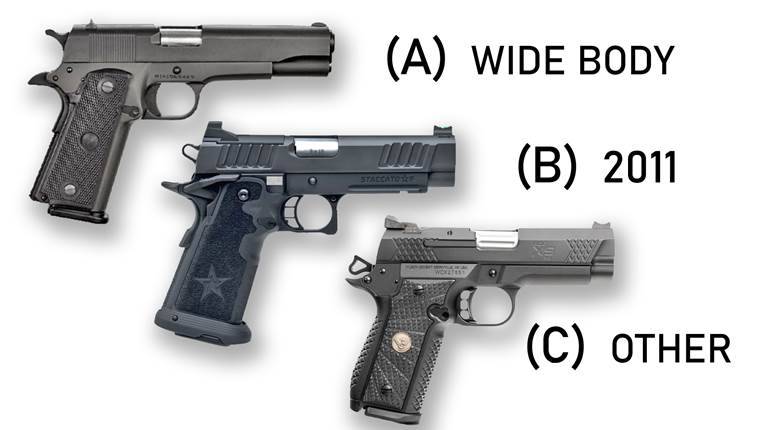
In some hunting camps, what happens around the campfire stays around the campfire. Luckily, for most American big-game hunters, what happened around a campfire in the North Carolina Mountains in 2010 didn’t remain a hunting camp secret. Remington’s new Model 783 rifle proves that under the suits of some Remington executives, you’ll find camo.
In the fall of 2010, John Trull, Jay Bunting and John Fink-all of whom you might call “big dogs” within Remington’s rifle program-were on a deer hunt where they decided Remington needed a new rifle, one as accurate and dependable as a Remington Model 700 but less expensive. This is exactly what the American heritage of firearms manufacturing is about; building quality firearms that hard-working Americans can afford.
They left camp with a blueprint for what would become the Model 783, a model number with meaning. The “Seven” reflects the model 700’s legendary reliability and accuracy. The “Eight” was a call back to the Model 788, which was Remington’s last affordable alternative to the 700. And finally, the “Three” represents 2013; the year Remington would introduce this rifle. The “Three” could also represent the 30-year span-1983 until 2013-between the model 788 and the 783.
After their hunting camp revelation, Trull and Fink talked with hunters all across America to collect input on the new rifle. They knew it had to be dependable and accurate, but they also learned the importance hunters placed on the weight and handling of their rifles. With finalized specifications, Remington assigned the project to the plant in Mayfield, Ky., which is the same place Remington’s sister company, Marlin Firearms, manufacturers the Model X7.
On Sept. 11, 2012, the first production Model 783 rifles rolled off the line. A few days later, Fink drove to West Virginia with four of them and we headed out to a long and narrow cow pasture to see what they would do. After several hundred rounds, many fired out to 500 yards, Fink told me these rifles would retail for less than $450. I told Fink he had a winner and that Remington needed to let him go to hunting camp more often.
The Remington Model 783 is, in reality, a simple rifle, and that’s not a bad thing. It’s held together with five screws; two hold the stock to the action, one holds the trigger guard in place and the remaining two mount the trigger to the action. If you take the rifle completely apart you have 10 pieces, and five are screws. (Bolt disassembly will yield a few additional parts.)
The Model 783’s action is cylindrical, measuring 1.355 inches in diameter. The bolt body measures only 0.695 inches in diameter so that means that, less operating tolerances, you have a lot of steel there for strength. The action has a long but narrow ejection port when compared to most bolt-actions, and this helps with rigidity too. It’s also drilled and tapped to accept dedicated Remington 783 scope bases or two Model 700 front bases.
The rigid action was one of the design elements settled on at hunting camp. Another was the medium-contour barrel. Stiff barrels dampen harmonics. Every Model 783 has the same barrel contour, measuring 1.074 inches in front of the action/barrel nut and tapering to 0.662 inches at the muzzle, regardless of caliber. The action/barrel nut is reminiscent of those used by Savage and Marlin. It allows for simpler and very precise headspacing. The nut is just shy of an inch long and sandwiches a 0.185-inch-thick recoil lug between the face of the action and the action/barrel nut. The recoil lug is 1.1-inches wide and extends almost a half-inch down into a recess in the stock.
The synthetic stock is injection-molded, but it’s a bit stiffer than those commonly used on entry-level-price bolt-action rifles. It was also a product of the hunting camp discussions: the Remington blokes didn’t want the stock to feel cheap or flimsy, so they specified a different polymer blend. Being the hunters they are, they also knew the interface between the stock and the barreled action contributes to accuracy. So, they specified a free-floating barrel and included aluminum pillars for the front and rear action screws to pass though.
The black synthetic stock, which will soon be available in five camo patterns, has a modern profile. It comes with a SuperCell recoil pad, integral sling swivel attachment points and stippling panels on the fore-end and grip. It is very comfortable to carry or shoulder, and the comb is positioned for low-scope mounts. The trigger guard is polymer and racy looking, just like the stock, and is open enough for gloved fingers. It’s held in place by the rear action screw and short screw, which threads into the stock.
Forward of the trigger guard is the detachable-box magazine. It has a steel body with a polymer follower and base plate, and was smartly designed to fit flush with the bottom of the rifle for ease of carrying. It’s also easy to remove due to a large recess at the front where the release button is located.
The bolt has a floating head fitted with a Model 700-style plunger ejector. The extractor, however, fits flat against the bolt face and is held in place by spring tension and a ball bearing. It moves perpendicular to the bolt in channels cut in one of the two opposing locking lugs. The bolt release is positioned on the left rear of the action and is mounted to the trigger housing.
Two distinct features of the bolt are the scallops on the bolt shroud and the flat bolt handle. Engineers at Mayfield conceived both features after the three deer hunters turned the project over to them. The scalloped bolt shroud continues the racy profile, and the flat bolt handle-while of the same profile as that of a Model 700-provides a bit of uniqueness while offering additional scope clearance for those who prefer the sleek profile of a low-mounted scope.
And then there’s the trigger. Triggers with passive safeties were popularized by Glock but are increasingly more common on rifles these days. It’s a way of providing a good trigger pull without worrying about inadvertent discharges or liability. The 783’s trigger uses a center lever that must be depressed before the trigger can be pulled. It’s exactly the same trigger used by Marlin on the X7 bolt-actions. I’m a trigger snob because a good trigger is essential to accurate shooting, particularly when shooting offhand like many hunters need to do. The trigger on the 783 is adjustable, has no take-up and is creep-free with just a slight bit of over-travel.
Even though I was the first non-Remington employee to shoot a Model 783 back in September of 2012, I didn’t get the opportunity to put one through an intensive workout. Yeah, I shot those rifles out to 500 yards and found I could expect about 11/2 minute-of-angle or better accuracy from each of them. But that was with one load.
I’d been looking forward to an opportunity to test a Model 783 without one of its architects looking over my shoulder. So, when I received a 783 in .30-’06 Sprg. for evaluation, I mounted a good riflescope-a Trijicon 3-9x40 mm Accupoint-and headed to the range. I fired 200 rounds out of the 783, 80 from the bench and the rest from various field positions. After zeroing I worked from various unsupported positions banging steel out to around 150 yards. The rifle was sweet on the shoulder and 5 inch and 6 inch steel targets between 50 and 150 yards. were easy to hit, time after time.
At the bench, things were going real well until I tested a third load. When the first round went off it was a bit louder and kicked a bit harder than normal and I felt a push of gas in my face. I leaned back, looked at the rifle and gas was leaking out around the action like it was on fire.
I took this as a definitive clue something was wrong. The bolt had to be pounded open and the cartridge case had to be manually removed. It was an obvious overpressure situation with a 180-grain factory load. The primer had flattened and blown out, and the extractor had ripped the rim off the case when the bolt was forced open. The extractor also popped out of its raceway.
After thoroughly examining the rifle, I reinstalled the extractor and wisely switched to different ammunition to finish accuracy testing. I then fired five more, five-shot groups but had to pull each fired case out with my fingers since the ejector was stuck in the bolt face.
I forwarded images of the cartridge case to a ballistician, and he hypothesized pressure had been in excess of 100,000 p.s.i.-well above .30-’06 Sprg. proof-load pressure and near twice the standard pressure. Here’s the good news; the rifle handled the excessive pressure exceptionally well. Lessons learned? The 783 has a strong action, and always wear shooting glasses.
As a side note, that questionable box of ammunition was returned to the manufacturer for inspection and to determine the cause of the overpressure load. Once evaluated, appropriate recalls and warnings will be issued.
After working with the Model 783 in .30-’06 Sprg., I’m more impressed now with Remington’s newest than I was last fall with one of the first off the assembly line. The rifle is a joy to shoot, pleasingly accurate and a tremendous bargain for the money. In fact, it would be a good bargain even at Remington 700 prices, which start at $100 more.
None of us should be surprised. After all, three experienced hunters sitting around a campfire designed the 783. That, in my mind, is exactly how a real hunting rifle should be developed. Yep, a lot of things that happen at deer camp should stay there. We should all be glad that the concept of this rifle didn’t. In my opinion the Model 783 is the best new hunting rifle of 2013-at any price point.





































